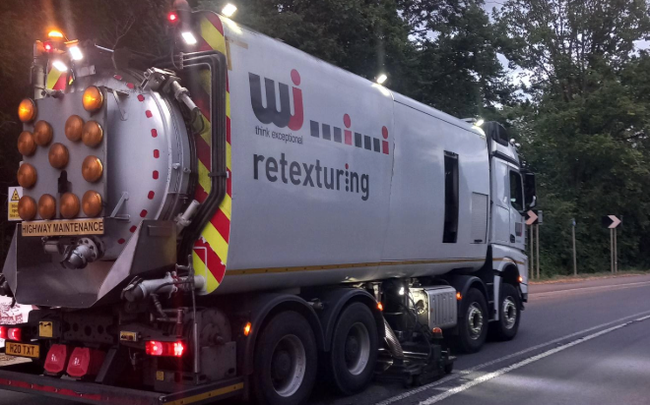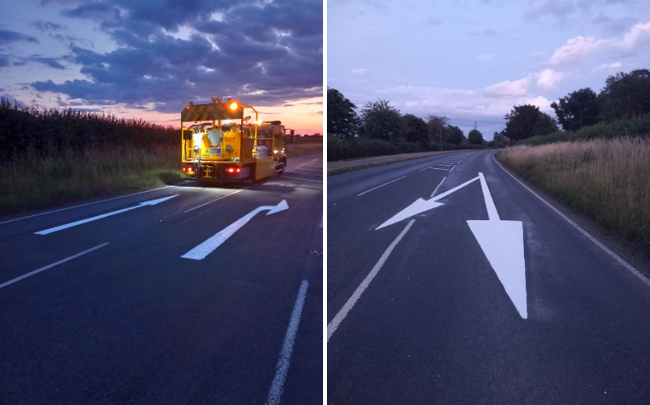Rapid Road Refresh - Retexturing and Capital Lining works in Bucks

Through a coordinated programme, our teams and external contractors have improved road safety by carrying out road surface retexturing and capital road marking works across key sites along the A413 between Adstock and Hardwick, Wood Lane, Langley and Sheepridge Lane, Flackwell Heath.
Top line delivery stats
💷 £714,600 saved compared to traditional resurfacing
🌱 Over 150 tonnes CO₂e saved (based on RSTA carbon data)
🛣 19,850 m² of road surface retextured
🪨 Around 2,000 tonnes of virgin aggregates conserved
The approach
The works covered 19,850 square metres of the network (over 2.5 x the size of the pitch at Wembley Stadium), across six priority locations that had seen increased incident rates over the past year.
The areas treated included four sites on the A413 (Adstock, Winslow, Whitchurch and Hardwick) alongside Wood Lane and Sheepridge Lane. At the same time, works were carried out to support our Capital Lining Programme on the A413 from Padbury to Aylesbury. This included refreshing centre and edge lines, replacing studs and installing high friction surfacing (HFS) at critical sections.
Retexturing and lining works
Road surface retexturing and lining works help to improve road safety by restoring skid resistance and enhancing visibility of road markings. Traditionally, the solution to restore skid resistance or address binder bleed (a highway defect where excess bitumen rises to the surface, creating a shiny, black, and often sticky layer on the road, especially in the wheel paths) would involve full resurfacing.
Retexturing mechanically reworks the existing surface to improve skid resistance using the existing aggregates (crushed stone, sand, gravel etc) already in place. This method avoids quarrying, processing and laying new materials, helping to preserve high-quality aggregates and extend the life of the road. Using retexturing in place of traditional resurfacing supports our wider sustainability goals; significantly reducing carbon emissions and conserving natural resources.
Retexturing across the 19,850 square metres delivered an estimated carbon saving of more than 150 tonnes compared to resurfacing with further reductions*, which was achieved through fewer closures and plant movements. (This saving is equal to approx. 284 UK households' annual electricity consumption)**.
Financially, the approach saved £714,600, and removed the need for approximately 2,000 tonnes of new, valuable aggregate material, reinforcing both value and environmental performance.
*Based on WJ’s verified data and the RSTA Carbon Emissions for Road Surface and Other Maintenance Treatments report.
** Calculated using data from Ofgem.gov.uk

The results
By pairing the retexturing programme with the capital lining works and running both under shared traffic management, the team reduced overall programme time, cut disruption, and delivered significant environmental and financial benefits when compared with traditional resurfacing.
- Careful sequencing and paired site working meant the combined programme was completed in nine night shifts, more than a third faster than originally planned for the lining works alone. Skid resistance was restored, road markings and studs were renewed, and HFS was installed at targeted locations, improving grip and visibility across the treated sections of the network.
- The specialist techniques used for the road surface retexturing are fast to deploy, non-invasive, and allow roads to reopen quickly. This helped the teams to keep disruption to a minimum through reduced closures and faster delivery.
- Coordinating retexturing and lining works under the same traffic management arrangements contributed to delivering best value for money.
Following the success of the original programme, this approach will be extended to include an additional seven sites across the county!